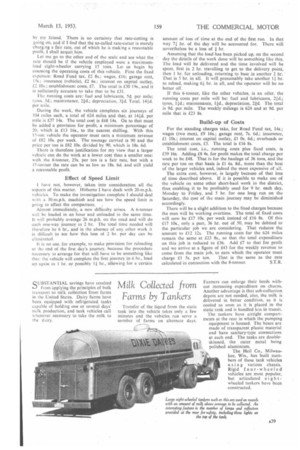Milk Collected from Farms by Tankers
Page 57

If you've noticed an error in this article please click here to report it so we can fix it.
QUBSTANTIAL savings have resulted a-) from applying the principles of bulk transport to milk collection from farms in the United States. Dairy farms have been equipped with refrigerated tanks capable of holding one or several days' milk production, and tank vehicles call whenever necessary to take the milk to the dairy.
Transfer of the liquid from the static tank into the vehicle takes only a few minutes and the vehicles can serve a number of farms on alternate days. Farmers can enlarge their herds without increasing expeediture on churns. Another advantage is that sub-collection depots are not needed, also, the milk is delivered in better condition, as it is cooled as soon as it is placed in • the static tank and is handled less in transit.
The tankers have airtight compartments at the rear in which the pumping equipment is housed. The hoses are made of transparent plastic material and have sanitary-type connections at each end. The tanks are double skinned, the outer metal being polished aluminium.
The Heil Co., Milwaukee, Wis., has built numbers of these tank vehicles using various chassis. Rigid four-wheeled vehicles are most popular, but articulated eightwheeled tankers have been constructed.




















































































